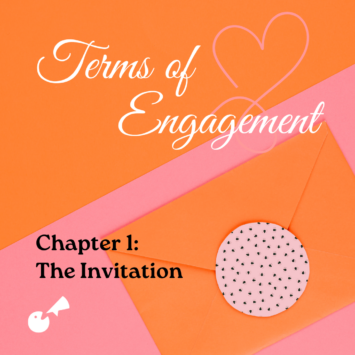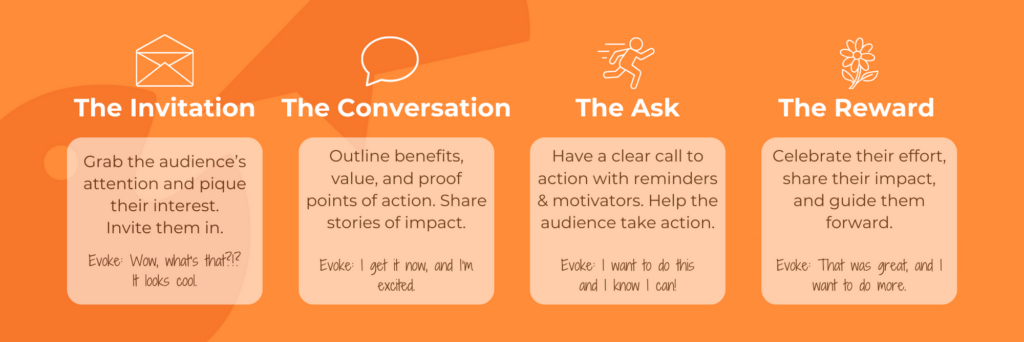
Terms of Engagement: Chapter 1, The Invitation
Terms of Engagement
I speak often about getting our conservation movements started by reaching out and motivating more people. But I know it can feel daunting to stare at a blank sheet of paper (or Google doc) and create a plan that will successfully engage more people in our causes.
Your thoughts may spin with questions like:
How do we motivate a person who doesn’t even know that our mission exists to get involved, take action, and – yikes! – even make lifestyle changes??? Where do we even begin???
A way to reduce the overwhelm is to conceptualize the behavior change process as a series of stages where we deepen the connection and engagement with the audience as they get further along in the journey.
I recently developed a beta version of engagement stages, which I’m cheekily calling “Terms of Engagement” for this blog series (February is the month for love, after all!), to help break the behavior journey into more manageable chunks.
Over the following post, we’ll explore each “chapter” of our audience love story:
-
Chapter 1: The invitation (this post).
-
Chapter 2: The conversation.
-
Chapter 3: The ask.
-
Chapter 4: The reward.
I was inspired by the AIDA marketing model when developing this framework. The AIDA model was created in 1898 (!!!) by an advertising professional named Elias St. Elmo Lewis as a simple way to explain how personal selling works (Oxford Reference).
Even though the AIDA model relies on an overly linear and rational purchasing process, I found it helpful for thinking of ways to switch up our engagement approaches throughout the consumer journey.
Chapter 1: The Invitation.
You know that giddy feeling you get when someone sends you an invitation? You may not even know what you’ve been invited to yet, but you instinctively wanna go. Just the fact that you’re being asked to join something is exciting!
As a social, herd species, we love feeling included in things happening around us. We are drawn to a sense of belonging.
To kick off our audience engagement efforts, we should think of our first outreach stage as an invitation.
For some of your projects, it may be a literal invitation to join an upcoming webinar or event, subscribe to a newsletter, sign a petition, etc.
If you don’t have something concrete to offer, invite the audience to engage more deeply in the topic by directing them to resources they can explore (e.g., visit the website, watch the videos, etc.).
Both approaches benefit from incorporating invitation-style language in the messages.
Join us.
You’re needed here.
Come on in.
Take a look.
Check us out.
See what we’ve accomplished.
We saved you a spot.
Be a part of our crew.
Dive in.
For this stage, it’s essential to have a clear and specific call-to-action and an equally exciting next step to keep the audience engaged as they move through the journey. We’ll explore the “exciting next step” idea in the second email.
What if the audience knows nothing about our organization or causes yet?
In the AIDA model, attention and interest are two separate consumer journey stages. Yet, the ideal approach is to treat them as a combo – especially when we have limited outreach dollars to work with.
Treating the first stage as an invitation lets us pique the audience’s interest, catch their attention, and let them know we exist. All in one go!
I mean, it would be great if we were living large like Coke and could spend money on attention-only ads to simply keep our brand from being forgotten about. But I don’t think any of us are rolling in that kind of marketing dough.
Instagram ads do a nice job of delivering the invitation combo by providing “shop now,” “learn more,” and “take a look” buttons to quickly convert attention into clicks. Next time you’re on IG, see which ads invite you in.
“The invitation” isn’t limited to social media posts. You can use this approach in email subject lines, on the homepage of a website, at the start of a workshop or presentation (or in the invitation to those events), and even when hosting a table at an outreach event.



